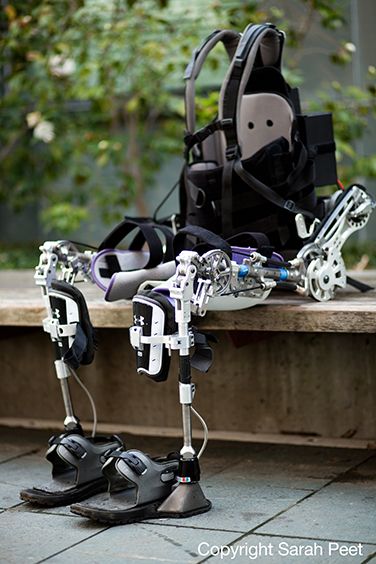

Skype Session: Robotic Exoskeletons for Humans
Source/Author: Delaney Counsman '19
May 09, 2018
Shorecrest Upper School medical science classes and clubs had a great opportunity to Skype with Dr. Michael McKinley, a robotics engineer and postdoctoral researcher at US Bionics / UC Berkeley, a robotics and human engineering lab.
Dr. McKinley spoke to us about his experiences in creating a robotic exoskeleton. With his company Suit X, he is helping paralyzed patients to finally walk again with the help of a robotic exoskeleton. Dr. McKinley taught us that some prosthetics patients have had regrowth and regained some abdominal or limb control. The process for making the phoeniX suit has taken years with many different versions. The company has gone through clinical trials and had to have FDA approval of the suit before it could be used. He now has 12 prototypes being tested in Hong Kong, Texas, and California. We learned so much from him, including the pluses and minuses of the exoskeleton. One negative is that you have to limit the speed the suit moves at due to it being hard to slow down the device. However, the positive of being mobile again outweighs this. The fact that they can help people walk again is a miracle within itself! The price of the phoeniX is one-third of the price of its competitors. The company has future plans to possibly create an exoskeleton for children as well.
Dr. McKinley showed us yet another way to help those in need. Thank you to Dr. McKinley for teaching us about connecting robotics engineering and medicine along with showing us a new possible path for our futures!
Here are some video links to learn more about robotic exoskeletons:
Paraplegic Walks for the First Time
Dr. McKinley spoke to us about his experiences in creating a robotic exoskeleton. With his company Suit X, he is helping paralyzed patients to finally walk again with the help of a robotic exoskeleton. Dr. McKinley taught us that some prosthetics patients have had regrowth and regained some abdominal or limb control. The process for making the phoeniX suit has taken years with many different versions. The company has gone through clinical trials and had to have FDA approval of the suit before it could be used. He now has 12 prototypes being tested in Hong Kong, Texas, and California. We learned so much from him, including the pluses and minuses of the exoskeleton. One negative is that you have to limit the speed the suit moves at due to it being hard to slow down the device. However, the positive of being mobile again outweighs this. The fact that they can help people walk again is a miracle within itself! The price of the phoeniX is one-third of the price of its competitors. The company has future plans to possibly create an exoskeleton for children as well.
Dr. McKinley showed us yet another way to help those in need. Thank you to Dr. McKinley for teaching us about connecting robotics engineering and medicine along with showing us a new possible path for our futures!
Here are some video links to learn more about robotic exoskeletons:
Paraplegic Walks for the First Time
























